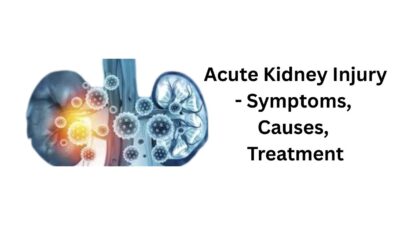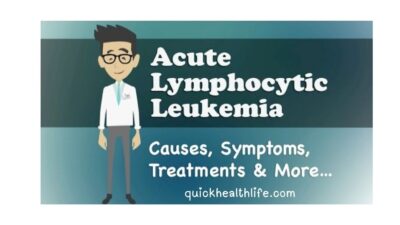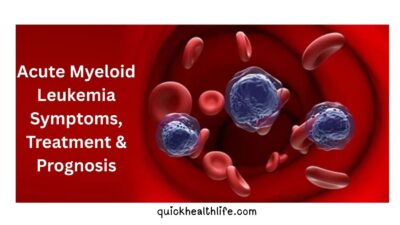What is Acute cholecystitis?
Acute cholecystitis is an inflammation of the gallbladder. The gallbladder is an organ that sits below your liver and helps your body digest fat.
Cholecystitis can become very severe and in most cases requires immediate medical attention. See your doctor as soon as possible if you think you have acute cholecystitis.
This condition can become chronic if it persists for a prolonged period of time, or if you’re having recurring symptoms from the inflammation.
Table of Contents
What are the different types of cholecystitis?
1. Acute Calculous Cholecystitis
This is the most common type, accounting for about 90-95% of all cases.
- Cause: Caused by a gallstone (calculus) becoming lodged in the cystic duct, which traps bile within the gallbladder. This leads to a buildup of pressure, irritation, and eventually inflammation and infection.
- Onset: Sudden and severe.
- Key Symptoms:
- Intense, steady pain in the upper right or center abdomen
- Pain that may radiate to the right shoulder or back
- Fever and chills
- Nausea and vomiting
- Tenderness over the abdomen (Murphy’s sign)
- Treatment: This is a surgical emergency. Treatment typically involves hospitalization, IV fluids, antibiotics, and ultimately, a cholecystectomy (surgical removal of the gallbladder), often performed laparoscopically.
2. Chronic Cholecystitis
This type results from long-standing inflammation and repeated bouts of mild irritation.
- Cause: Usually due to recurrent gallstones and repeated episodes of mild acute cholecystitis. Over time, the gallbladder becomes damaged and scarred. It may shrink, thicken, and lose its ability to function properly.
- Onset: Gradual and persistent.
- Key Symptoms:
- Recurrent, milder bouts of upper abdominal pain (biliary colic)
- Bloating after fatty meals
- Nausea
- Indigestion
- Treatment: While not always an immediate emergency, the standard treatment is still a cholecystectomy to prevent future acute attacks, infection, and other complications.
3. Acute Acalculous Cholecystitis (AAC)
This is a less common but more dangerous type of cholecystitis that occurs in the absence of gallstones.
- Cause: Linked to critical illness, severe trauma, major surgery, burns, or prolonged fasting. It is thought to be caused by bile stasis (sluggish flow) and inflammation due to reduced blood supply to the gallbladder.
- Who is at risk? Critically ill patients in hospital ICUs, those on total parenteral nutrition (TPN), individuals with severe vascular disease, or patients with serious infections.
- Onset: Rapid and severe, but its symptoms can be masked by the patient’s other critical illnesses.
- Treatment: Requires a high index of suspicion. Treatment involves addressing the underlying critical illness, antibiotics, and often an emergency cholecystectomy or a less invasive procedure to drain the gallbladder (percutaneous cholecystostomy).
4. Emphysematous Cholecystitis
This is a rare and severe form of acute cholecystitis characterized by gas-forming bacteria infecting the gallbladder wall.
- Cause: Caused by infection with bacteria like Clostridium perfringens or E. coli. It is more common in individuals with diabetes mellitus or a weakened immune system. The ischemia (lack of blood flow) creates an ideal environment for these bacteria.
- Onset: Rapid and life-threatening.
- Key Risk: A very high risk of gallbladder gangrene and perforation.
- Diagnosis: Can be seen on imaging tests (X-ray, CT scan) as gas bubbles within the gallbladder wall or lumen.
- Treatment: This is a true surgical emergency. Immediate intervention with broad-spectrum antibiotics and urgent cholecystectomy is required.
What are the causes and risks factors of cholecystitis?
The gallbladder is an organ that sits below the liver. It stores bile, which is produced in the liver. Your body uses bile to digest fats in the small intestine.
Acute cholecystitis occurs when bile becomes trapped in the gallbladder. This often happens because a gallstone blocks the cystic duct, the tube through which bile travels into and out of the gallbladder. When a stone blocks this duct, bile builds up, causing irritation and pressure in the gallbladder. This can lead to swelling and infection.
Other causes include:
- Serious illnesses, such as HIV or diabetes
- Tumors of the gallbladder (rare)
Some people are more at risk for gallstones. Risk factors include:
- Being female
- Pregnancy
- Hormone therapy
- Older age
- Being Native American or Hispanic
- Obesity
- Losing or gaining weight rapidly
- Diabetes
Sometimes, the bile duct becomes blocked temporarily. When this occurs repeatedly, it can lead to long-term (chronic) cholecystitis. This is swelling and irritation that continues over time. Eventually, the gallbladder becomes thick and hard. It does not store and release bile as well as it did.
What are the symptoms of acute cholecystitis?
The main symptom is pain in the upper right side or upper middle of your belly that usually lasts at least 30 minutes. You may feel:
- Sharp, cramping, or dull pain
- Steady pain
- Pain that spreads to your back or below your right shoulder blade
Other symptoms that may occur include:
- Clay-colored stools
- Fever
- Nausea and vomiting
- Yellowing of skin and whites of the eyes (jaundice)
How is acute cholecystitis diagnosed?
Clinical Assessment & Physical Exam
- Medical History: Assessment of risk factors (female, forty, fertile, fat, fair)
- Symptom Evaluation: Right upper quadrant (RUQ) pain, fever, nausea/vomiting
- Murphy’s Sign: The hallmark physical exam finding
- Technique: Physician presses gently beneath the right rib cage
- Positive: Patient arrests inspiration due to sharp pain
- Accuracy: 97% specific for acute cholecystitis
2. Laboratory Tests
| Test | Purpose | Typical Findings |
|---|---|---|
| CBC | Detect infection | ↑ WBC (>10,000/μL) |
| Liver Enzymes | Rule out liver issues | ↑ Alkaline phosphatase, ↑ AST/ALT |
| Amylase/Lipase | Rule out pancreatitis | Usually normal |
| CRP | Measure inflammation | Elevated |
| Bilirubin | Check for common duct stone | Mild elevation possible |
What are the risk factors for getting cholecystitis?
You’re more likely to get cholecystitis if you have gallstones. You’re more likely to have gallstones if you:
- Are a woman.
- Are pregnant.
- Have obesity.
- Have diabetes.
- Have high cholesterol.
- Have lost weight rapidly.
- Are older than 40.



